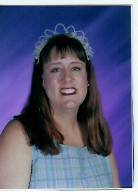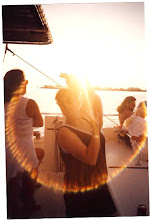
McCann, M.R. (2003). Luba: The angel of Bergen-Belsen. Illustrations by Ann Marshall.
Berkeley, CA. Tricycle Press.
Berkeley, CA. Tricycle Press.
Book Type/Pages:
Picture/48
Grade Level:
This book is appropriate for grades three through eighth.
Curriculum Links:
This book could be used in social studies instruction.
Author Credibility:
Michelle R. McCann is an author of seven children’s books and a professor of children’s literature at Portland State University. In the acknowledgments, she credits several colleagues for fact checking and translations. She researched this story by interviewing Luba Tryszynska and the children that Luba saved.
Awards:
2004 Louis Posner Memorial Award (National Jewish Book Award for Illustrated Children’s Books); Jane Addams Honor Book; 2004 Simon Wiesenthal Center-Museum of Tolerance Library and Archives Once Upon A World Children’s Book Award
Book Summary:
This book is about Luba Tryszynska, a prisoner at the Bergen-Belsen concentration camp during World War II. One night in 1944, she discovered fifty-four Dutch children that were left for dead in an empty field. Luba brought the children into her crowded room and risked her life daily to feed and care for these children. When the camp was liberated in April 1945, fifty-two of the children were still alive. Luba looked for her husband, son, and other family members. Not finding any surviving family, Luba emigrated to the United States in 1947. Many years later, the grown children she helped save found her and they were reunited. Luba was awarded the Silver Medal of Honor for Humanitarian Services by Queen Beatrix of Amsterdam in 1995. As a result of the press, she located distant family members in the United States.
National/State Standards:
The social studies standards addressed by this book are People, Places, and Environments, Time, Continuity, and Change, and Individual Development and Identity.
Illustrations/Graphics:
The illustrations in this book were done in oil and collage. The illustrations show lots of light, which lend a positive feel for such a dark time in history. The illustrations throughout the book give hope for the plight of the children and show Luba’s love for them. I found them to be very effective telling the story.
Access Features:
Important access features in this book are an author’s note with the names of the “Diamond Children”, a prologue with information about the events leading up to World War II, an epilogue, some additional information on World War II and the Holocaust including a map, a bibliography, and acknowledgments.
Use in My Classroom:
I would use this book in a study of World War II and the Holocaust. It could also be used in a character education unit to teach acceptance and kindness towards others.
My Response to the Book:
I found this to be a powerful book. The topic of the Holocaust is such an emotional one and this story of how one women was able to save the lives of fifty-two children is incredible. When doing research on the book, I found a listing on a website for librarians that stated that this was a true story but not typical of those of concentration camps. The camp that Luba was at, Bergen-Belsen, was the same camp that Anne Frank died at. I think this would be a good book to use in the classroom to share with students while studying this time period. The hope that it inspires would balance all of the evil doings that occurred in concentration camps. This was a beautiful story that I will read again.
Related Texts:
Other books about the Holocaust:
Erika’s Story by Ruth Vander Zee
The Cats in Krasinski Square by Karen Hesse
Star of Fear, Star of Hope by Jo Hoestlandt
Willy and Max: A Holocaust Story by Amy Littlesugar
The Yellow Star: The Legend of King Christian X of Denmark by Carmen Agra Deedy
The Number on My Grandfather’s Arm by David A. Adler
Rose Blanche by Ian McEwan
The Harmonica by Tony Johnston



















No comments:
Post a Comment